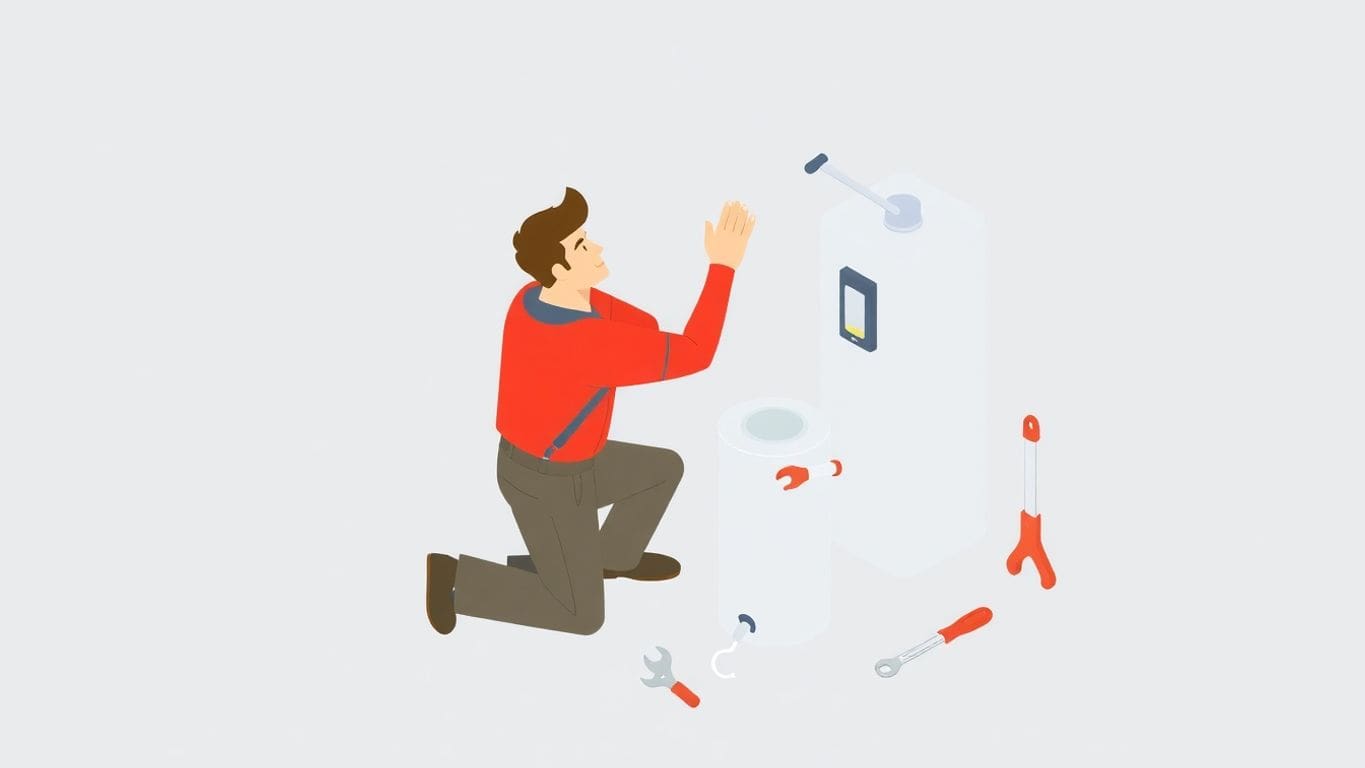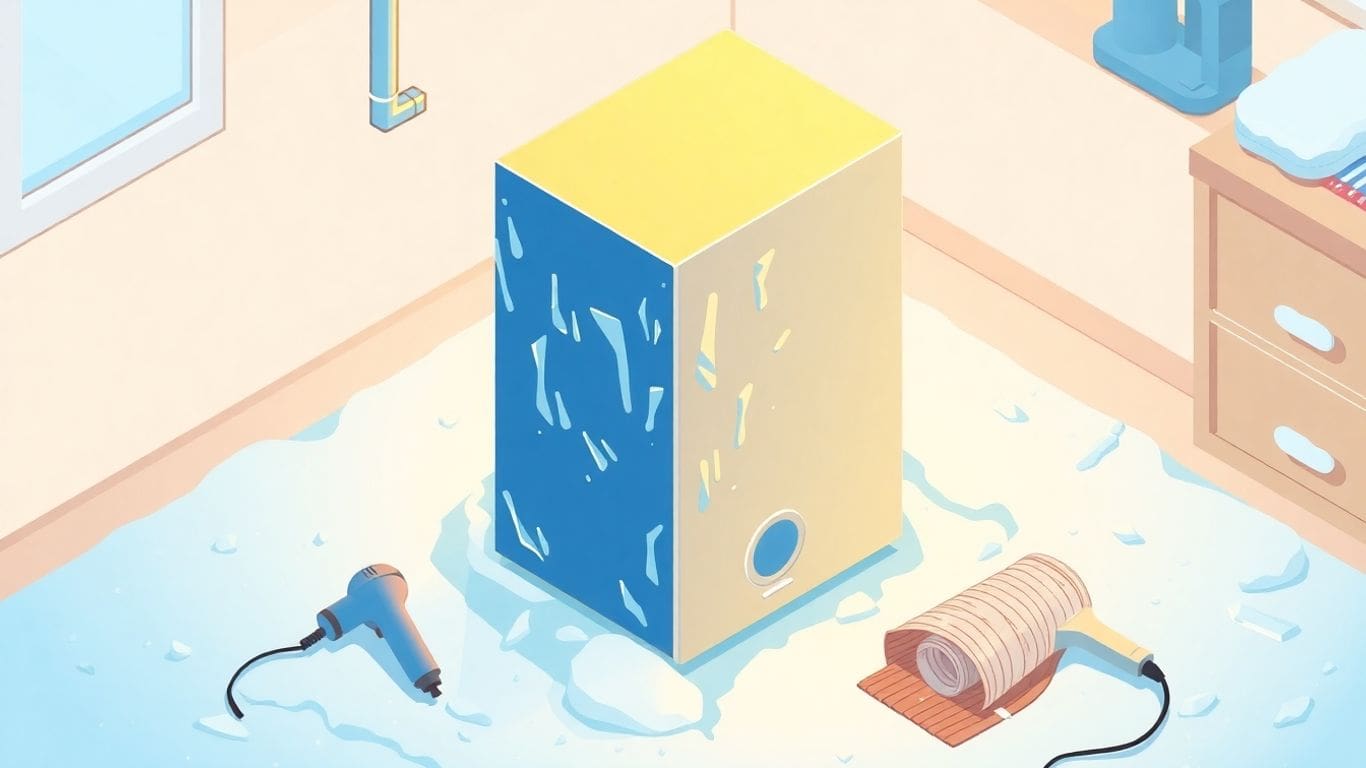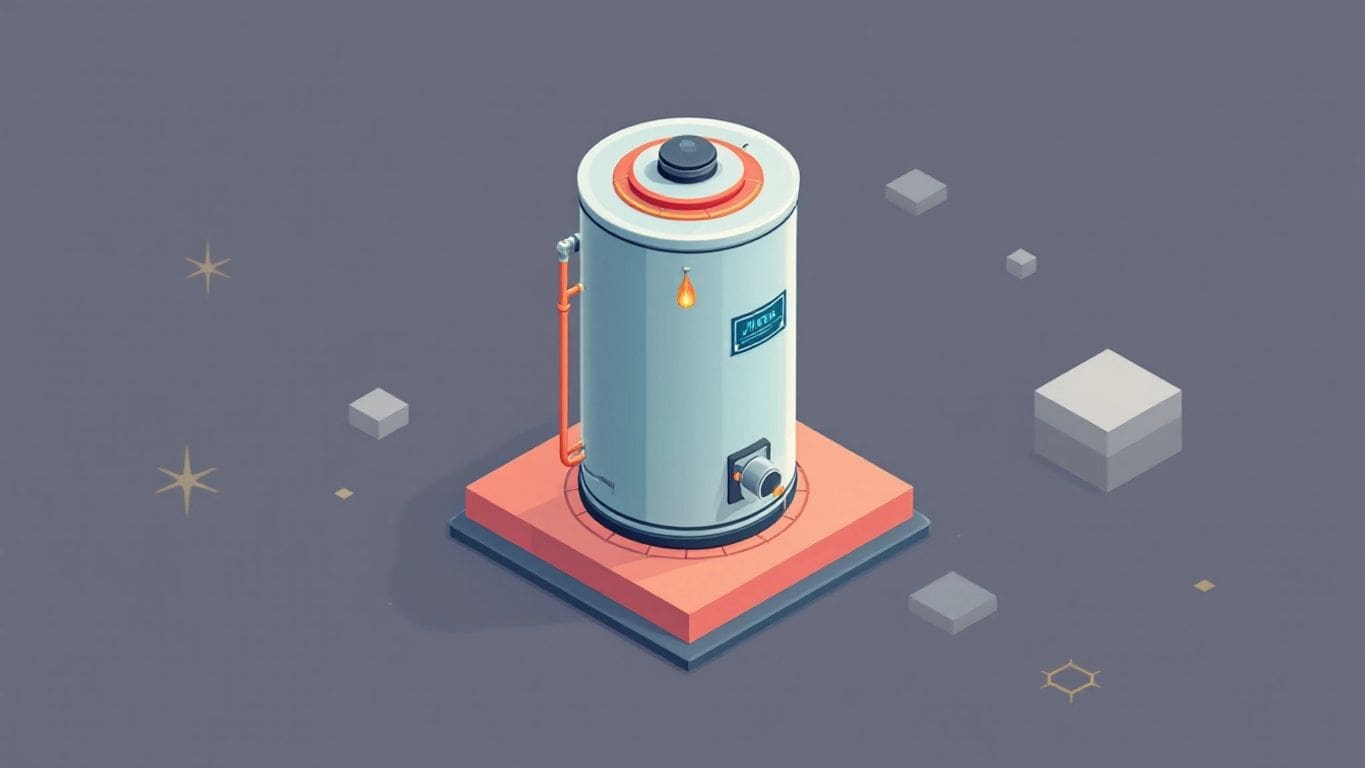
Ever walked into your basement or utility room only to find water pooling around your water heater? It’s a common problem and usually points to a leaking overflow pipe. This issue can be more than just a nuisance; it can lead to bigger problems like water damage or even a complete system failure if not addressed. Overflow pipes are meant to release excess water and pressure, but when they start leaking, it’s often a sign that something is off. Let’s break down why this happens and how you can fix it.
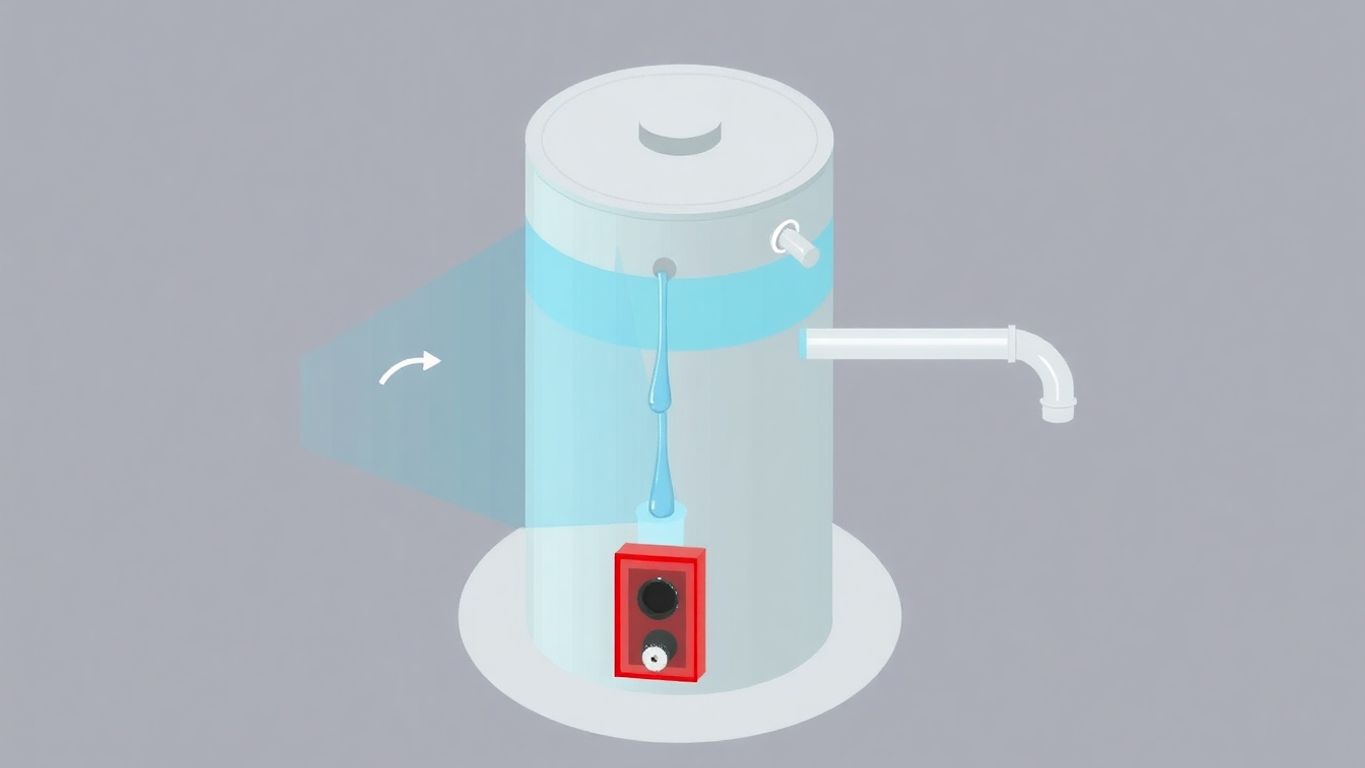
One big reason your water heater’s overflow pipe might be leaking is a faulty Temperature and Pressure (T&P) Relief Valve. This little part is super important. It helps control the pressure and temperature inside the tank. If it wears out, it might not seal properly. This can cause a constant drip. Sometimes, minerals and rust build up on the valve, making it hard for it to work right. Checking and replacing this valve regularly can help stop leaks.
Too much pressure in your water heater tank can lead to leaks. This can happen if the water pressure coming into your home is too high. A broken pressure regulator might also cause this. When the pressure is too high, the T&P valve releases water to ease the pressure. To fix this, you might need to put in a pressure regulator to keep the water pressure in check.
If your water heater’s thermostat is set too high, it can cause leaks. The thermostat controls how hot the water gets. If it’s set too high, the water can get too hot, raising the pressure inside the tank. This might make the T&P valve open and let water out. A broken thermostat can also stop regulating the temperature properly, leading to overheating. Adjusting the thermostat to a safer setting can help prevent leaks.
Remember, keeping an eye on these common causes can help you stop leaks before they start. Regular maintenance is key to keeping your water heater working well.
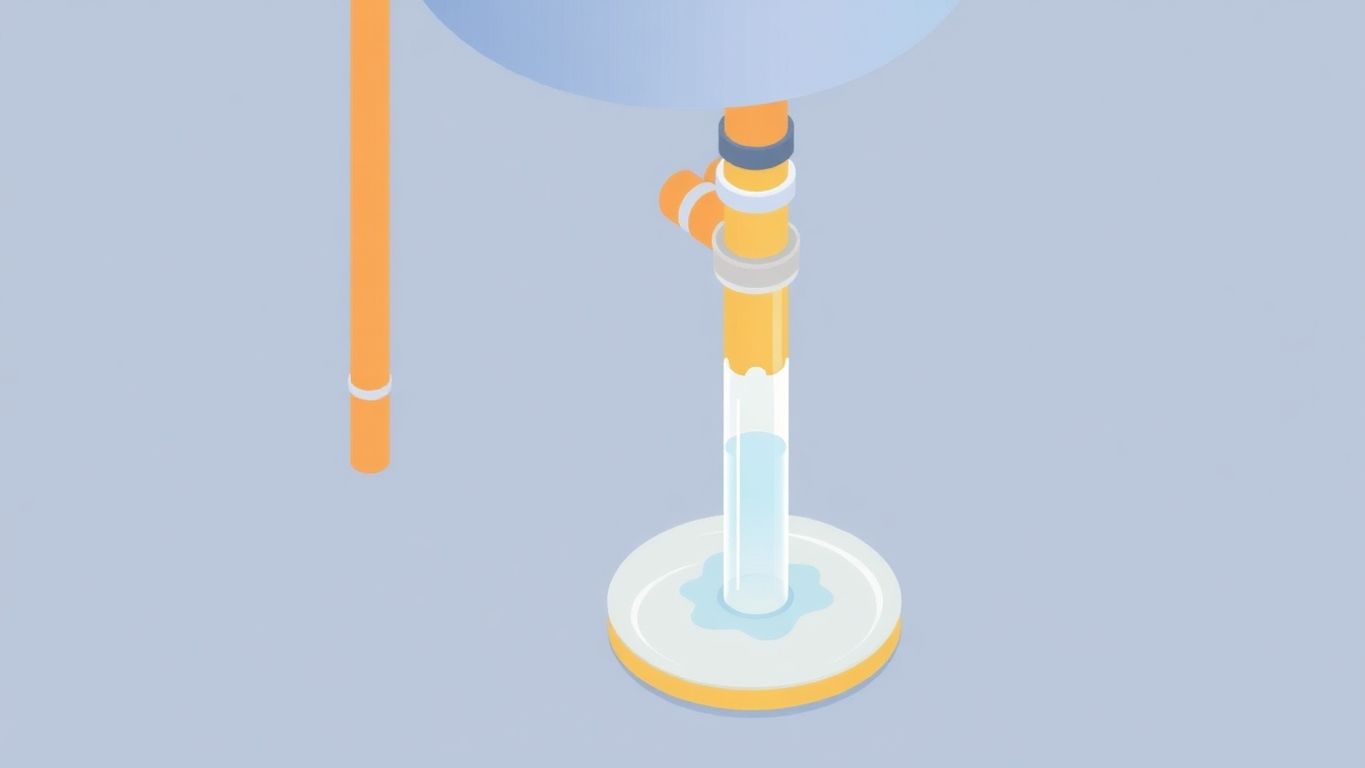
The Temperature and Pressure Relief (T&P) valve is crucial for your water heater’s safety. Check this valve first when diagnosing leaks. Lift the test lever to see if it snaps back into place. If it doesn’t or if water keeps dripping, the valve might need replacing. Also, look for rust or mineral buildup around the valve. These can stop it from sealing tight.
Corrosion in your water heater tank can lead to leaks. Examine the tank for any rust, especially around the base and seams. If you spot rust, it could mean the tank is weakening. Regular maintenance, like flushing the tank, helps prevent this.
Over time, the pipe fittings can loosen or wear out, causing leaks. Check all the connections and tighten any loose ones. If a fitting is damaged, replace it. Make sure the drain valve at the tank’s bottom is closed tight and not leaking.
Taking the time to diagnose the problem properly can save you from bigger issues down the line. A small leak might seem minor, but it can lead to significant water damage if ignored.
If your water heater’s overflow pipe is leaking, the Temperature and Pressure (T&P) valve might be the culprit. Here’s how you can replace it:
If excessive pressure is causing the leak, you might need a pressure regulator:
Sometimes, the thermostat setting might be too high, causing excessive pressure:
Fixing a leaking water heater overflow pipe isn’t always a difficult task. With a bit of patience and the right tools, you can solve the problem yourself. However, if you’re unsure or uncomfortable, don’t hesitate to call a professional. Safety should always come first.
The overflow pipe in your water heater is a critical safety feature. Its main job is to let out extra pressure or hot water from the tank. This stops the tank from getting too full or too hot, which can be dangerous. If the pressure inside the tank gets too high, the overflow pipe releases some of it to keep things safe. Think of it like a safety valve that makes sure everything runs smoothly.
The Temperature and Pressure (T&P) valve is connected to the overflow pipe. This valve is set to open when the tank’s pressure or temperature gets too high. When it opens, it lets water out through the overflow pipe. This helps lower the pressure and temperature inside the tank. It’s like a safety net that catches problems before they get too big.
The overflow pipe is more than just a simple pipe. It’s a key part of your water heater’s safety system. Here are some of its important features:
The overflow pipe is like a guardian for your water heater, always ready to step in and keep things safe. It’s there to make sure your hot showers stay relaxing and worry-free.
Keeping an eye on your water heater is super important. At least once a year, you should check the temperature and pressure (T&P) valve, the tank, and all the pipe fittings. Look for any signs of rust, leaks, or other issues. Regular inspections can catch problems early before they turn into big headaches. Also, clean around the heater to prevent dust and dirt from building up, which can cause overheating.
Parts of your water heater, like the T&P valve, can wear out over time. If you notice any leaks or if the valve doesn’t snap back after testing, it might be time for a replacement. It’s a good idea to make a list of components that might need replacing every few years. This can include the T&P valve, pipe fittings, and any other parts showing wear and tear.
Water pressure that’s too high can cause leaks in your overflow pipe. You can use a simple pressure gauge to check the pressure in your home. If it’s above 80 PSI, you might need a pressure regulator. Keeping the pressure in check helps prevent leaks and keeps your water heater running smoothly.
By taking care of your water heater with regular maintenance, you can extend its life and avoid unexpected repairs. Remember, a little attention now can save a lot of trouble later.
For homeowners, it’s also wise to keep an eye on your water heater’s age and efficiency. If your heater is over 10 years old or you notice it’s not working as well, it might be time to think about a replacement. Regular maintenance, like flushing the tank, can help keep it in good shape longer. But knowing when to replace it is key to avoiding bigger issues down the road.
Sometimes, it’s best to call in the pros. If your water heater is leaking a lot or if there’s water pooling around it, you should definitely get help. Strange noises coming from the heater or rusty water are also red flags. These might mean bigger problems that only a professional can fix.
Trying to fix things yourself can be risky. You might think you’re saving money, but if you make a mistake, it could cost you more in the long run. Messing with water heaters can be dangerous. There’s a risk of electric shock or even a gas leak if you’re not careful. Plus, without the right tools, you might not be able to fix the problem at all.
Finding a good technician is important. Look for someone with experience and good reviews. Ask your friends or family if they know anyone reliable. It’s also a good idea to check if the technician is licensed and insured. That way, you know they’re qualified to do the job right.
If your water heater is over 16 years old, it might be time for an upgrade. Investing in a new, energy-efficient model can save you money in the long run. Don’t wait for a small problem to turn into a big one.
First things first, you need to turn off the power to your water heater. This is super important to avoid any risk of electrocution. If your heater is electric, find the switch and turn it off. For gas heaters, turn off the gas supply. Then, turn off the water supply to prevent more water from leaking. This helps in managing the situation and keeps things safe.
When dealing with water heater leaks, it’s smart to wear protective gear. Grab some gloves to protect your hands from hot water or sharp edges. Wearing goggles can keep any splashes out of your eyes. It’s always better to be safe than sorry!
Water and electricity are not friends. To avoid electrocution, make sure everything is dry around your water heater. Keep electrical devices away from the wet area. If you’re unsure about dealing with electricity, it’s best to call a professional.
Remember, safety should always come first when handling any water heater issues. Taking the right precautions can prevent accidents and keep your home safe.
When the water pressure in your home is too high, it can cause your water heater’s overflow pipe to leak. High pressure makes the water heater work harder, which can wear out parts faster. This can lead to leaks in the overflow pipe. Normally, water pressure should be between 40 and 60 PSI (pounds per square inch). If it’s higher, it might push water out of the overflow pipe.
A pressure reducing valve can help control high water pressure. This valve is installed on your home’s main water line. It helps keep the water pressure at a safe level. If you have high water pressure, a pressure reducing valve might be a good investment. Here’s what you should consider:
Keeping your water pressure at the right level is important. You can use a water pressure gauge to check it. Here’s how you can maintain the right pressure:
Remember, keeping your water pressure in check can prevent leaks and extend the life of your water heater. It’s a simple step that can save you from bigger problems later on.
Many people think that if water is coming out of the overflow pipe, the Temperature and Pressure (T&P) valve must be broken. This isn’t always true. The T&P valve is designed to release water when the pressure or temperature gets too high. It’s like a safety valve that prevents your water heater from exploding. So, if you see water, it might mean the valve is doing its job.
Another common belief is that high water pressure is always bad for your water heater. While it’s true that too much pressure can cause leaks, a little pressure is necessary for the system to work. It’s all about balance. Your water heater needs some pressure to push hot water through your pipes. If it’s too low, you might not get hot water at all.
Some folks think that any leak means the water heater needs replacing. But that’s not always the case. Sometimes, a leak is just a sign that a part needs fixing or replacing, like a worn-out washer or a loose pipe fitting. Before you panic, check these smaller issues first. They could save you a lot of money and stress.
Remember, not every leak is a disaster. Sometimes, it’s just your water heater’s way of saying it needs a little attention.
When you’re dealing with a leaking overflow pipe on your water heater, having the right tools and materials is super important. Being prepared can save you time and frustration. Let’s dive into what you’ll need.
You can find most of these tools and materials at your local hardware store. It’s also a good idea to check online for any specific parts you need, especially if you’re looking for something unique to your water heater model.
Remember, fixing a leak yourself can be rewarding, but if you’re not comfortable with any part of the process, don’t hesitate to reach out to a professional. Safety should always come first.
Your water heater’s thermostat setting plays a big role in how it works. If the thermostat is set too high, the water inside can get too hot. This makes the pressure inside the tank go up. When pressure gets too high, the overflow pipe might start leaking. Keeping the thermostat at the right setting helps prevent leaks. The Department of Energy says setting it to 120°F is best.
To keep your water heater safe, it’s a good idea to check the thermostat now and then. If you see the temperature is too high, you can lower it. Here’s how:
These steps help keep the pressure down and prevent leaks.
Sometimes, a thermostat just doesn’t work right. Here are some signs it might be broken:
If you see these signs, the thermostat might need fixing or replacing. Keeping an eye on these things can help you spot problems early and avoid leaks.
The overflow pipe might leak due to too much pressure in the tank, a broken temperature and pressure relief valve, or thermostat issues.
To fix a leaking overflow pipe, you can replace the temperature and pressure relief valve, install a pressure regulator, or adjust the thermostat settings.
The overflow pipe helps release extra water when the pressure or temperature inside the tank gets too high, keeping the tank safe.
Call a professional if you see signs of rust, can’t fix the leak yourself, or if there are risks involved in DIY repairs.
High water pressure can make the overflow pipe leak. Using a pressure reducing valve can help keep the water pressure at a safe level.
Turn off the power and water supply, use protective gear, and avoid touching electrical parts to stay safe.
The valve lets out water when the tank’s pressure or temperature is too high, preventing possible damage or explosions.
You’ll need tools like a wrench, Teflon tape, and possibly a new valve or pressure regulator. You can find these at a hardware store.

